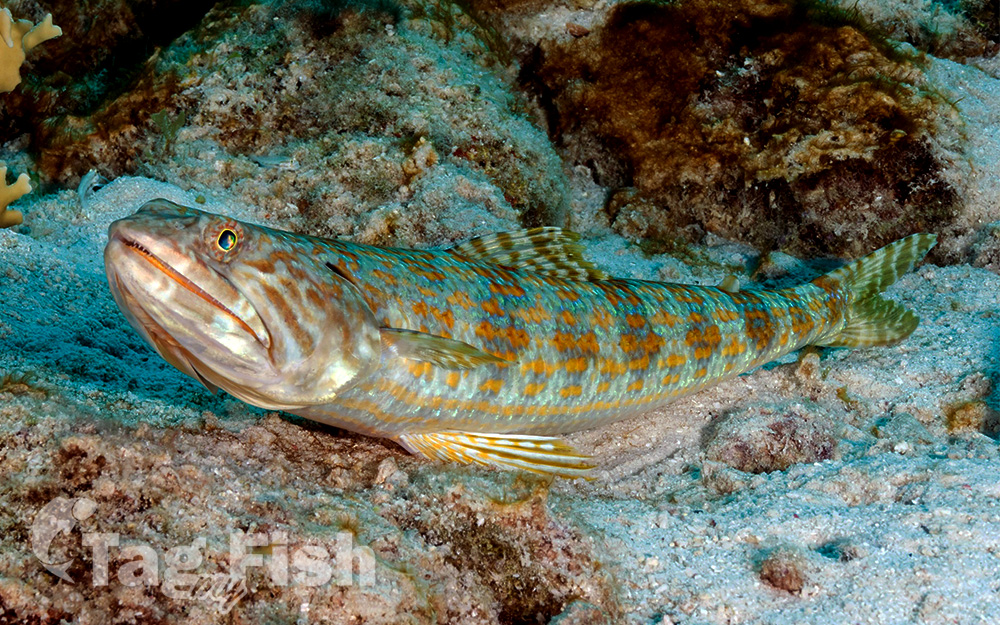Sand diver
(Synodus intermedius)

Classification
General data
Sand divers have an elongated body and can grow to 46 cm (18 in) long.
The dorsal (upper) surface is dappled brownish-gray and a black patch occurs on the shoulder girdle at the upper end of the gill slits. About eight pairs of reddish-brown bars are on the top and sides of the body, broadest at the lateral line and narrowing towards the belly. Also, slender yellowish-gold longitudinal lines run along the body. The ventral (under) surface of the fish is pale. The tip of the lower jaw is rounded, without a fleshy knob, and the soft rays of the dorsal fin are relatively short, the tip of the front one lying on top of the origin of the hind one when depressed. These characteristics help to distinguish this species from the offshore lizardfish (S. poeyi). The anal fin of the sand diver has 10-12 soft rays which distinguish it from the otherwise similar diamond lizardfish (S. synodus) which has eight to 10.
Another fish with which it might be confused is the Atlantic lizardfish (S. saurus), but that species is uncommon in the Caribbean and has slender, blue or turquoise longitudinal lines.
As is common among benthic and demersal fish, the cornea of the eye has an iridescent layer, the function of which may be to offer protection to the eye from very bright light.
The mouth is wide and filled with numerous needlelike teeth. Two rows of teeth are in the upper jaw; the inner row teeth are longer than the outer row. Three rows of teeth are on the lower jaw; the outer row is covered by lips, the middle teeth increase in size. Both jaws have posterior teeth that slant slightly toward the back. Also, three or four rows of depressible teeth exist on the palate. The tongue has five rows of teeth, the largest positioned closest to the anterior tip, slanting toward the back.
Sand divers are found in the subtropical western Atlantic Ocean between 37 and 17°N, the Caribbean Sea, and the Gulf of Mexico. Their range extends from North Carolina and Bermuda, southwards to Santa Catarina in Brazil, and includes the West Indies, Caribbean Sea and northern, eastern, and southern Gulf of Mexico.
Sand divers are usually found on or near the seabed in sandy areas among boulders or in sandy corridors in reefs, but they also rest on the tops of reef structures, propping themselves up on their pectoral fins.
They are found at depths down to 320 m (1,050 ft), but they seldom occur near shore and most records are in the depth range 38 to 110 m (125 to 361 ft).











